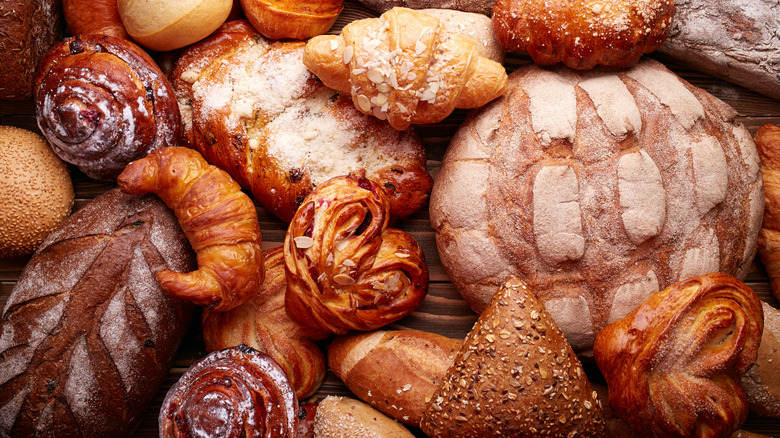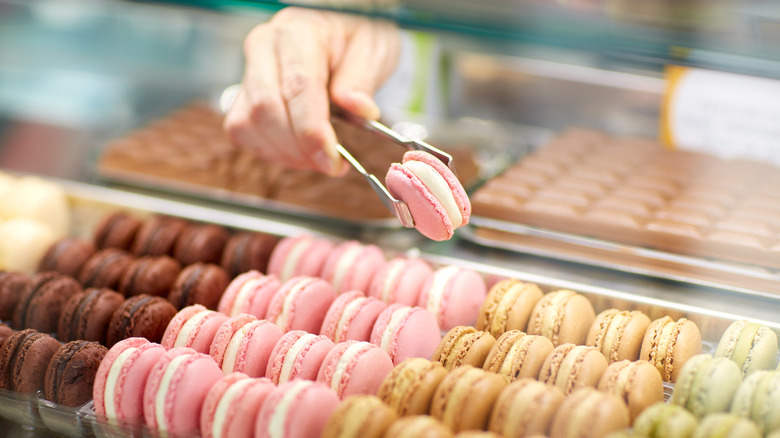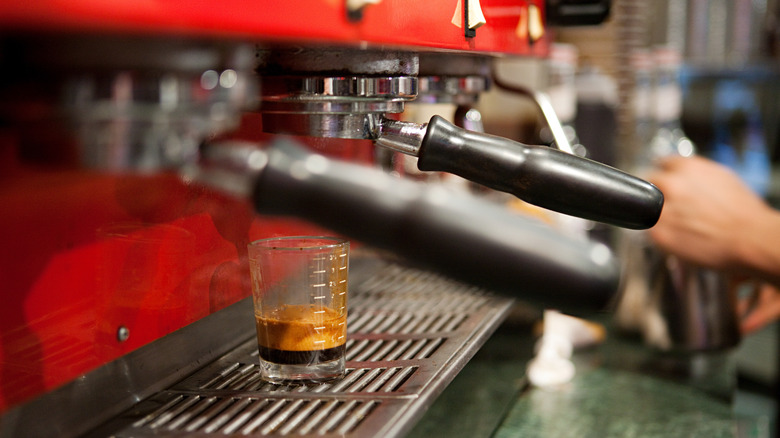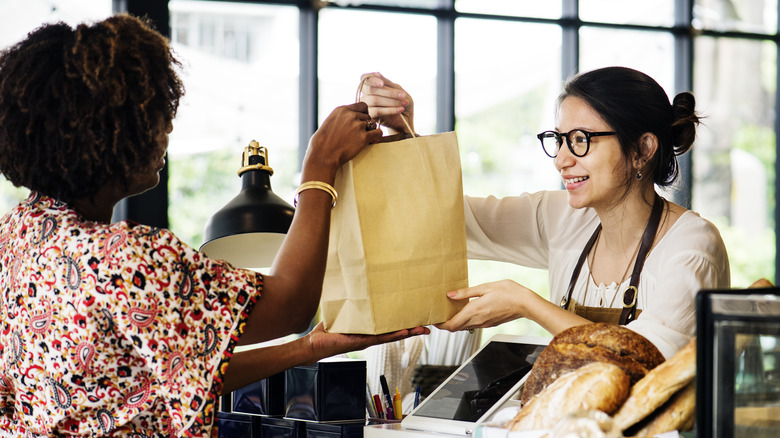Working At A Bakery Changed How I Act As A Customer
I don't remember exactly what came over me when I decided I wanted to work in a bakery. It was a little over a year ago, and I had only lived in New York City for a few short months. Perhaps the unexpectedly brutal job market in my new locale caused me to project my hopes and dreams onto a really good kouign-amann I'd had that day. Whatever the case, I was filled with newfound hope for my future.
I walked around Queens in a happy daze, admiring the church down the block from my apartment whose bells had previously served as an hourly reminder of my dwindling bank account. "I love pastries!" I exclaimed to myself in a manic whisper, "I'll apply to pastry school, and in the meantime, I'll sell baked goods to the fine people of New York! This is my destiny! English literature degree be damned!" A family of rock pigeons cast suspicious glances in my direction.
I stayed up until the wee hours of the morning researching croissant purveyors, and I emailed about a dozen of them. By the next afternoon, I had an interview lined up for a Sydney-based bakery that had recently planted seeds on the East Coast.
I set out on my first 6 a.m. commute the following week, only to discover a couple of months later that the bakery life was not my destiny. Still, I learned a lot; namely, I learned how to be a good customer. Here's how you can be, too.
Choices are hard, but managing a rush is harder
When driving a car in the city, pedestrians are the most annoying creatures on the road. When you park your car and become a pedestrian, drivers become the bane of your existence. Whichever role you find yourself in, you're probably not thinking about the perspective of the person in the opposite one, which is why crosswalks are rife with hostile glances. We can call this the pedestrian-driver paradox, but we can just as quickly call it the worker-customer paradox.
One way in which a customer can close the gap of this dilemma is by taking the temperature of the room — and by temperature, we mean capacity. One of my favorite things about working at the bakery was answering questions about the rotating pastries made fresh every morning, from the French-style viennoiseries with seasonal fruit to the traditional Australian sausage rolls and meat pies staying warm in their heated case. But when the place was slammed with a Saturday morning rush, it would slow things down for everyone when a customer would ask me about every item on display.
While my behind-the-counter bakery days are behind me (as far as I know), I always remember to keep my questions brief when I'm in a long line of hungry pastry lovers. If I'm having trouble deciding, I'll go to the end of the line and take some time to mull over my options.
Perspective is everything
At the risk of digressing into a gripe about the kind of customer who I like to think is very rare, I want to introduce my second point by recalling an encounter with an unusually demanding patron whom I will call Diane. Diane came in on a slow morning knowing exactly what she wanted: a pear Danish and a small drip, with no cream or sugar. I bagged her pastry while my co-worker poured her coffee, and all was right with the world.
A few minutes later she was back, but not for a second Danish. Instead, she insisted that her coffee was not hot enough. She even reached across the counter and told us to try it for ourselves.
This is to say that certain customers would expect me and my co-workers to cater to them in ways that fell outside our job descriptions. Little things, like throwing in extra ketchup containers with a sausage roll or slicing a baguette in half for two friends to share, were no big deal. Other things, like requests to slice an entire sourdough loaf by hand or to magically increase the temperature of their coffee, were a bit much. Plus, they could get us in trouble.
When I order something at a counter-service spot, I'm particularly cognizant of the fact that a worker's friendliness doesn't equate to their willingness to go out of their way for me. After all, their boss could be around the corner.
We know when you don't tip
If you haven't gotten around to reading New York Magazine's February 2023 issue — an issue which features a redux on common etiquette — here's one big takeaway: You should tip, and you should tip well. This applies to restaurants (where 20% has replaced 15% as the minimum gratuity), coffee shops, bakeries, and anywhere else that has a Square screen with a tipping prompt.
Tips were pooled at the bakery where I worked, meaning they were distributed evenly among the staff. Therefore, customers who threw in an extra dollar or two with their coffee and baked goods were supporting the business as a whole. Customers who didn't tip were hardly the subject of after-hours gossip, but my co-workers and I could still tell when someone selected the "no tip" option. I take that into account when I stop in somewhere for a midday cookie, and you should too. I can guarantee that gesture won't go unnoticed.
In short, it's true what they say: Everyone should work in food service at some point in their life. Longtime servers, bakers, and baristas might roll their eyes at someone (me) who doles out industry wisdom after less than a year on the job, but I stand by my point that the best customer is the one who puts themselves in the position of the server. And who knows; if you're really nice, you might even get a free cookie.



